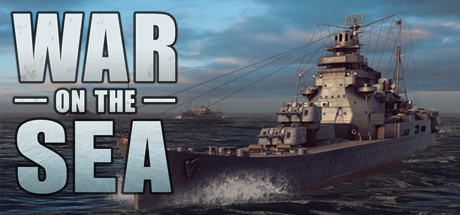War on the Sea – Armor & Protection

BALLISTICS
War on the Sea features detailed ballistics and damage systems. All gun types are individually modeled based on historical data with specific range, muzzle velocity, caliber and armor penetration characteristics. They are not necessarily balanced for game purposes but rather, are intended to emulate their historical performance. For simplicity, wind is not factored into the ballistics model.
SHELL PENETRATION
Armor is used to protect vital systems from hits. It is represented as the thickness of armor plating in a specific region of a ship (in inches or millimeters). There are other factors such as the materials used, quality of armor as well as slope. Armor at a sloped angle deflects incoming shells better, making it much more effective without having to actually thicken it. The hull of a ship has two armor values: belt (vertical) and deck (horizontal) which represent the protection against a hit to the side or a hit from above. Regions of the superstructure and gun turrets of a ship have a single armor value.
SHELL HITS
The following factors determine whether a shell will penetrate armor:
Caliber – Larger shells can punch through thicker armor.
Muzzle Velocity – Higher velocity shells possess more energy to penetrate armor.
AP Shell – Armor-piercing shells have a smaller explosive warhead but penetrate armor about 5x better than a HE shell of similar caliber.
Striking Angle – Shell strikes at shallow angles may simply bounce away (ricochet).
Short Range – shell has higher velocity with shallow trajectory. It can punch through belt armor but ricochet off of deck armor.
Long Range – shell arcs downward with steep trajectory. It can ricochet off belt armor but penetrate deck armor (called plunging fire).
DAMAGE DEALT BY SHELLS
When an AP shell strikes armor the following may occur:
– Shell caliber is greater than 14x the thickness of armor struck, it automatically penetrates and explodes doing full damage.
– Shell strikes, penetrates the armor, and explodes doing full damage.
– Shell strikes at a shallow angle and is deflected (ricochet) doing 20% damage.
– Shell fails to penetrate armor and explodes externally, causing only 20% damage.
High explosive (HE) shells do an additional 25% damage.
HE shells can still penetrate armor but are as only as effective as an AP shell about 1/5th of their caliber.
Any hit to an unarmored part of a ship (or if shell caliber is greater than 14x armor thickness struck), will automatically penetrate and explode doing full damage.
TORPEDO DEFENSE SYSTEMS
Torpedoes deliver a large warhead below the waterline, making them devastating weapons at sea.
Some larger ships have a torpedo defense system (TDS) built into their hull to help absorb the explosive force of a torpedo.
Upon being hit, the TDS is destroyed, making it ineffective against subsequent hits to the same region of the ship.
TDS is indicated as a percentage value and is usually only present in the outer hull of the mid-section of a ship.
Upon a torpedo hit to a compartment with TDS:
– chance for damage to be dealt to neighboring compartments is reduced by half of the TDS value.
– all damage dealt by that torpedo reduced by the TDS value.
– TDS value of compartment hit and its neighbors reduced to 0% as they are permanently destroyed by the torpedo impact.



